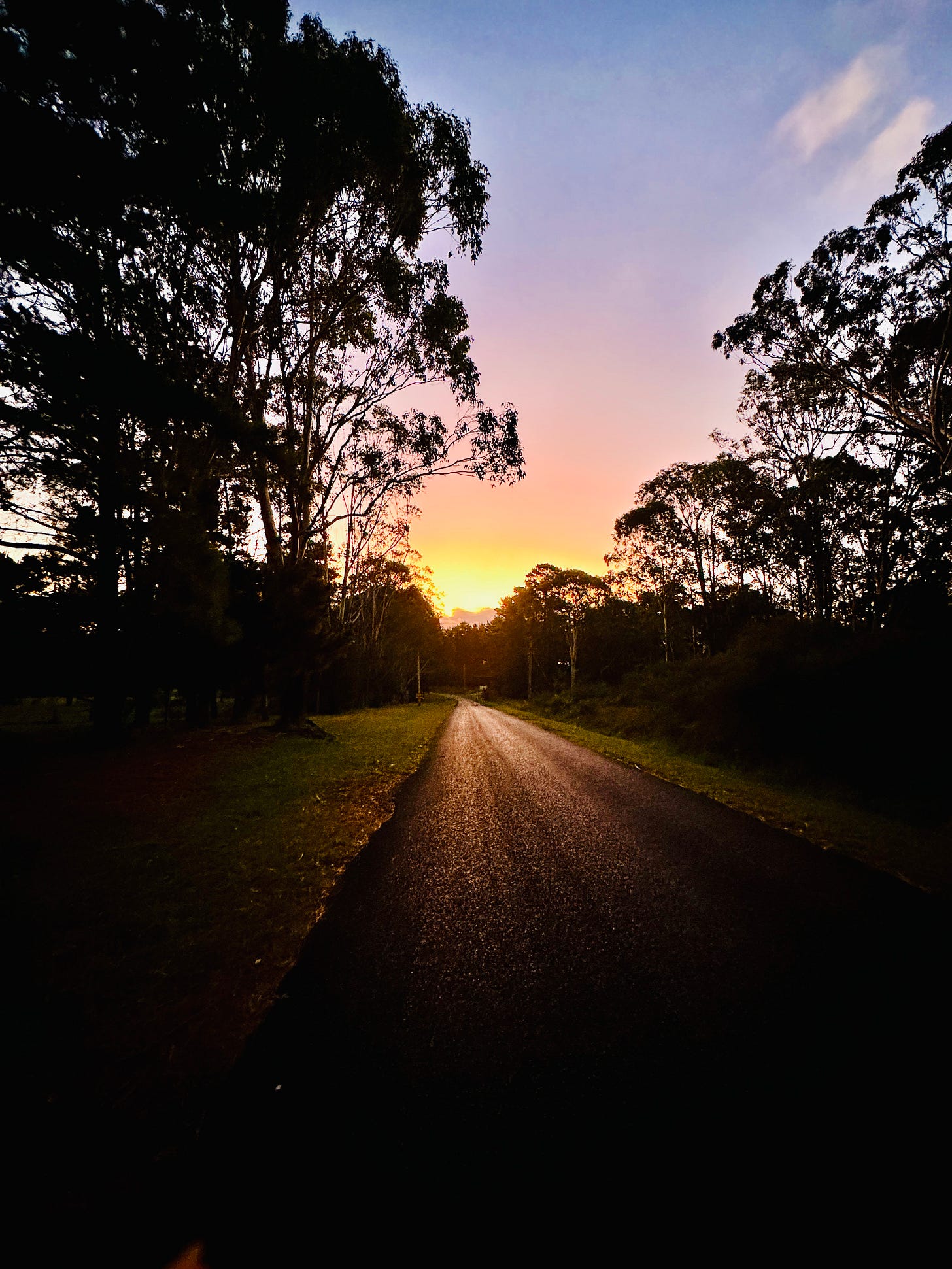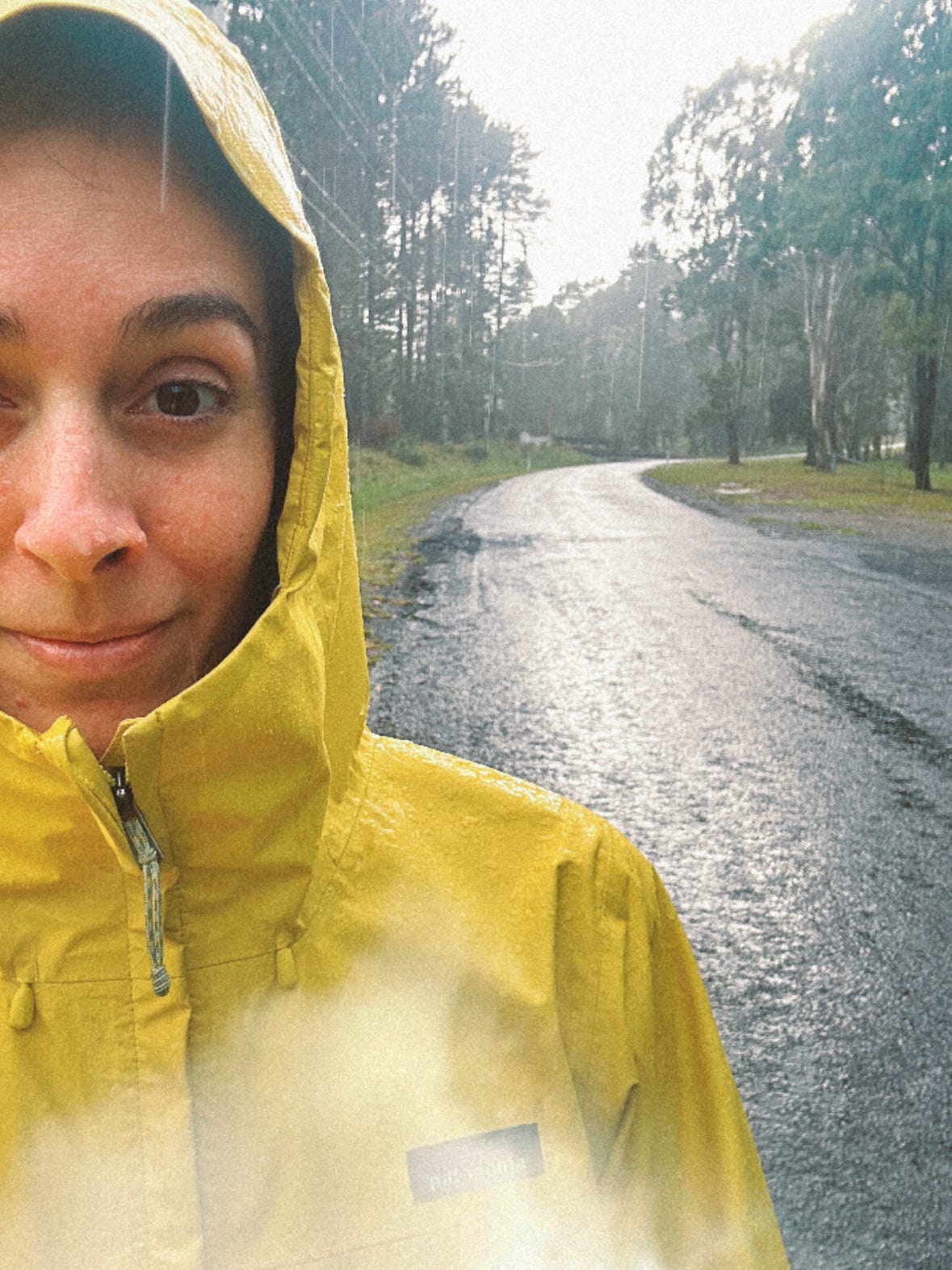Last week my heart cracked open. It was the first gathering of our insight dharma teacher group. I feel crazy honoured to be invited into the cohort for the next 4 years, and awestruck at the calibre of humans. We sat in silence, danced in circles, cried, shared, and laughed hysterically till we cried again.
One of the things that struck me in this collection of so many senior meditation practitioners, was that nobody presented a ‘spiritual personality’. These are folks with decades of practice (I am one of the youngest) and leaders in their fields. There were pioneers in eco-dharma, trauma recovery, positive neuroplasticity, regenerative systems change, collapse theory, and psychology for a safe climate. About 80% of the group are qualified professional therapists and supervisors. Nobody wears robes or religious paraphernalia. Nobody flaunts esoteric symbols. Nobody uses inaccessible mystical language from other cultures. Nobody acts like a guru. And I realised how much this matters to me.
For years now I’ve felt uneasy about the word ‘tradition’.
It reminds me of dogma and outdated ways of doing things. And yet here I am embarking on a 4 year mentorship within one.
The Insight Meditation tradition is the western vipassana community. It draws on the teachings of Theravada Buddhism, blended with contemporary psychological inquiry. Vipassana can be translated as ‘seeing into the nature of reality’. This modern approach differs from the way Goenka taught his renowned 10 days of stillness. Today, insight meditation retreats are softer, more gentle and embodied, and trauma informed in ways that meet us where we’re at today.
The word ‘dharma’ in this context means the teachings of the Buddha,
not a personal purpose like in Hindu traditions. And the Buddha was a dude named Siddhartha Gautama; a wandering ascetic teacher who lived in South Asia during the 5th century BCE. As the dharma entered modernity, it captured the interest of scholars and researchers, became embedded in scientific research circles, and birthed the field now called contemplative sciences. This way of understanding the human heart/mind is oriented within a wider lens of relationship with the living world. Inviting neuroscience, physics, and ecology to inform a framework of care that builds a bridge from the ancient to the now.
I was on such a high at the airport, re-inspired and starry eyed. Ready to write you this letter about all my insights. And then I watched Breath of Fire on the plane home. And my heart broke all over again. It’s a doco about Kundalini yoga in the west. Exposing the depth of immorality, harm, and abuse of power. These stories are deeply distressing to me. The moment reminded me of a saying in Zen,
Little doubt, little awakening.
Big doubt, big awakening.
In recent years I’ve been up close and personal to similar narratives in contemporary ‘spiritual’ spaces and it shattered my trust, to be honest. The silence around this in the yoga industry has been deafening. So much so, I held a panel last year to bring it to light called ‘The Fall of the Guru’ (the recording is available free online. CW: sexual assault).
I’ve witnessed first hand how ‘the spiritual life’ can beguile people into an infatuation with power.
I’ve seen charismatic figures offer mystical solutions to manifest your happiness, or wealth, or soulmate. I’ve watched yoga teachers use the glittery allure of orientalism to sell self-healing. Appropriating esoteric language and assuming entitlement to the customs of another culture is feeling uncomfortably colonial to me these days. Watching Breath of Fire reminded my why I choose not to chant Om in classes anymore. Why I try avoid flaunting Sanskrit (even thought I learnt the language years ago).
This awareness feels so important in wellness spaces today. As an act of integrity, and as a response to the unethical influences of many ‘spiritual personalities’ past and present. It hurts to face this reality. But it causes more harm to ignore it.
I tell you this to break your heart, by which I mean only that it break open and never close again to the rest of the world. -Mary Oliver
And yet. I know from experience there is something intoxicating about the feeling of belonging. Of being connected to a line of practitioners (the literal translation of ‘lineage’) that speak straight into your heart. There’s something intangibly precious about being in a community where you feel deeply understood. I know how important faith can be for making sense of the events of life, when these profound practices are a refuge in the storms of human experience. And how deeply we crave ritual and ceremony in our secular society. At its best, the dharma can connect us with something larger than the self. It can teach us to love bigger.
Perhaps the path of integrity means embracing this uncertainty.
It asks us to inquire carefully about what we believe. It includes both skepticism and faith. The past and the present. Holding space for the heartbreak and staying open to the mystery. As John Lennon once said,
“The more I see, the less I know for sure.”
At last, in the spirit of curiosity and care, here I share some insights collected from my week on the Insight Meditation Dharma Teacher path. Please question everything.
Insights from the path
Magic is everywhere in ordinary ways.
Maybe the most meaningful moments are sometimes the ones that don’t make sense. I am practicing paying attention to serendipity. Opening to coincidence. As a way to avoid getting too rational and staying in a state of awe towards life.
Keep romancing the mystery.
This is what I mean by leaning into awe. I believe a diligent practice of wonderment is essential for spiritual health. It helps us feel small and unravel the selfing that prevents us from seeing the bigger picture. As they say in Zen, “not knowing is most intimate”.
It’s a friggen miracle to be here at all.
How did you get inside this body, looking out from behind your eyes? How many heartbeats do you have left? Asking questions like this ensure we don’t take a single day for granted.
At it’s best, teaching is an expression of love.
When it’s not driven by a desire for approval, or power, or coloured by the fear of ‘what people will think’. When open to not-knowing, teaching can be a movement of the heart, spurred by a sense of deep care for others.
An inner practice supports the outer work.
I measure the benefit of any ‘spiritual practice’ by how much it orients to collective benefit. We all need to resource and care for ourselves first in order to be of service. But inner peace is not the end of the story. People can spend decades navel-gazing in a cycle of self-help before realising that their wellness was never seperate to the rest of the world. I believe the point of practice is learning how to remain in service to this life. And the deepest fulfilment, in the end, comes from contribution.
You’ve had very little say in the way you learnt to experience the world.
Each of our conditions are intergenerational, ancestral, and evolutionary. Your body, your beliefs, the culture you grew up in define your heart/mind. We are each only as free as our life circumstances have allowed. There can be no awakening without attending to the past and present systems in which you are embedded.
No story is the truth of who you really are.
Yet we fashion our identity around these stories. Our character structure clings to beliefs and experiences and takes ownership of them. Eg. My identity. My anxiety. We perpetuate the narrative of who we are in this way. There is great freedom is knowing who you are is not fixed. Your self is fluid. Your mind is a process emerging from all the things that have ever happened to you and are happening now.
Catch thoughts at the root and you can stop them growing
With enough mindfulness, you can notice a mental formation arising, and make a choice to not get involved. Bringing awareness to the mind in this way affects the cycles of thought > feeling > action, freeing you from habitual reactions. This takes great practice and concentration, but my gosh it changes everything.
All feelings are doorways.
So often we run from them, or try to push them away. But when you look close enough, and feel them fully (if you can), deep wisdom is revealed. Emotions are information, signposts to help you find your way.
In deep sadness, look for the love.
If there is great grief, it’s often motivated by an equal and opposite force of love. If you feel so deeply, it’s because you care so much. I am uncovering this in my inquiry about the heartbreak of tradition and lineage. In the midst of the sorrow, try asking, where is the love that leads to this pain?







